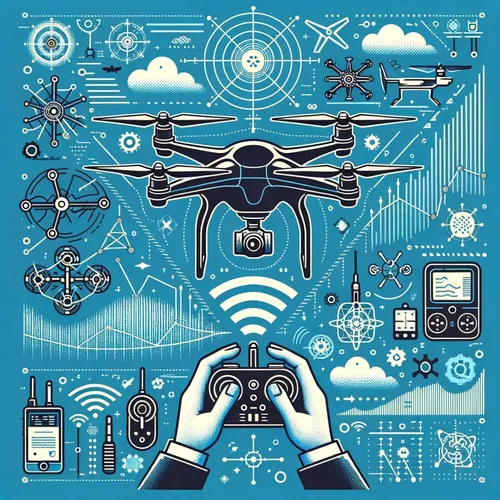Drones Gone Wild: Fleets Unleashed, AI Amped, and Compliance Cracked
- Author
- Quiet. Please
- Published
- Sun 24 Aug 2025
- Episode Link
- https://www.spreaker.com/episode/drones-gone-wild-fleets-unleashed-ai-amped-and-compliance-cracked--67493822
This is you Commercial Drone Tech: Enterprise UAV Solutions podcast.
Enterprise drone technology is rewriting the playbook for key industries, including construction, agriculture, energy, and critical infrastructure inspection. In 2025, commercial drones are more than aerial cameras; they are intelligent, connected assets driving real business outcomes. Recent advances in fleet management platforms, as highlighted in Forbes reports this week, show that integrated solutions like DJI FlightHub 2 and Aloft enable remote mission planning, real-time airspace authorization, and automated reporting for compliance and safety standards. For instance, Aloft’s FAA-approved enterprise management allows seamless integration with federal airspace systems, supporting rapid deployment while ensuring regulatory adherence.
Fleet control is at the heart of value generation. Solutions such as Azuga, Airdata UAV, and FlytBase allow businesses to scale from pilot projects to fully autonomous networks, centralizing flight logs, health monitoring, and maintenance scheduling. This automation minimizes downtime and enables predictive analytics, which, according to Unmanned Systems Technology, reduces operational risk and ensures long-term ROI. Recent case studies from global construction firms implementing drone-inspection routines have shown a thirty-eight percent reduction in safety incidents and a twenty-five percent cut in survey costs compared to traditional ground-based methods.
Integration with business systems and artificial intelligence is setting a new standard for actionable insights. FlytBase’s AI-R platform, rolled out in July, performs real-time object detection and edge-based video analytics, seamlessly linking data to enterprise dashboards and security networks. This capability is instrumental for sectors like energy, where rapid fault detection and automated reporting translate into millions saved by avoiding unplanned outages. Hardware now complements advanced software, with modular docking stations and sensor payloads adapting to diverse use cases—from multispectral imaging of crops to corrosion inspection on vertical assets.
Security and regulatory compliance remain paramount. The industry has embraced end-to-end encryption, robust firewall integration, and Remote ID obligations, as emphasized by Aloft and Airdata UAV’s latest updates. Companies deploying fleets are now required to implement regular pilot training and certification checks, made easier by connected training modules and automated audit trails.
Practical actions for enterprise stakeholders include piloting AI-integrated fleet management platforms, collaborating directly with software vendors to tailor compliance automation, and performing cross-system integration testing with existing enterprise resource planning frameworks. Looking ahead, drones will shift toward greater autonomy, where edge computing empowers machines to make mission-critical decisions in real time, and regulatory frameworks evolve to support broad beyond visual line of sight operations.
Thank you for tuning in. Come back next week for more on the latest enterprise tech. This has been a Quiet Please production, and for more insights, check out Quiet Please Dot A I.
For more http://www.quietplease.ai
Get the best deals https://amzn.to/3ODvOta
